Each year we visit a local family farm for their Maple Sugaring demonstration. What a hands-on (and tasty) way to learn about Native American and Colonial culture and history, chemistry, the weather, and ecology!
We followed the maple sugaring process from start to finish.
First, we learned a bit about the sugar maple (which is so important that New York, Vermont, Wisconsin, and West Virginia share it as their state tree). Farmer Bob gave a talk on how the trees produce the sugar in the sap through photosynthesis.
Cold evenings and warm days start the sap running. Stock up on Maple Syrup because this warm winter means that the sap is not flowing up and down like it needs to for harvesting. A jug of syrup is going to cost you this year!
We saw how they tap the trees now (a bit different from the metal tap and bucket that is the popular image of maple sugaring).
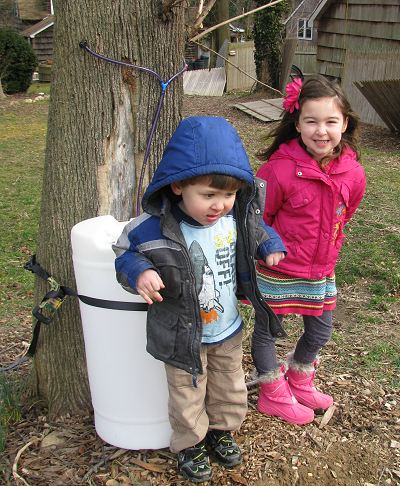
Today, producers use plastic tubing that draws the sap downhill to the sugar shack, where it is boiled into syrup. Thanks to the tubing, the sap stays clean. Not only is this cheaper and more efficient, it is more environmentally sound as there is no need to cut extensive roads into the forests and drive trucks back and forth to haul sap.
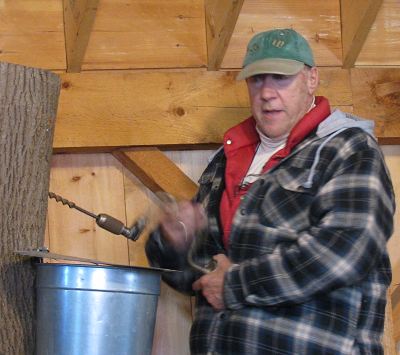
We also learned how a wood spile could be made from the staghorn sumac, which apparently also makes a delicious lemonade-like tea.
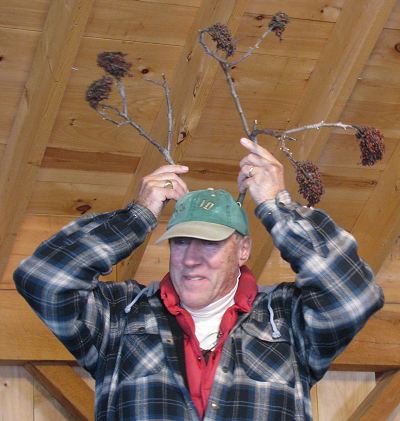
Next, we saw how the sap is boiled down to syrup.
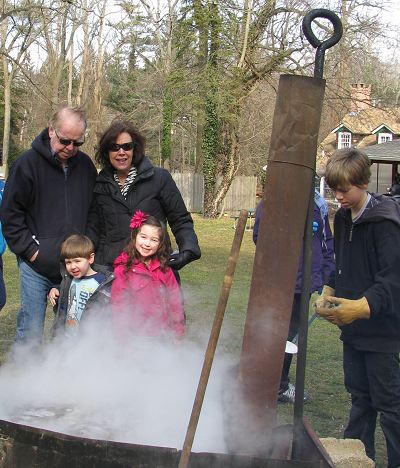
We learned that sap should be boiled outside because it takes at least 40 gallons of sap to produce 1 gallon of syrup. That means that all of that water vapor has to go somewhere!
Farmer Bob showed us that this gallon jug of sap would only make a thimbleful of syrup.
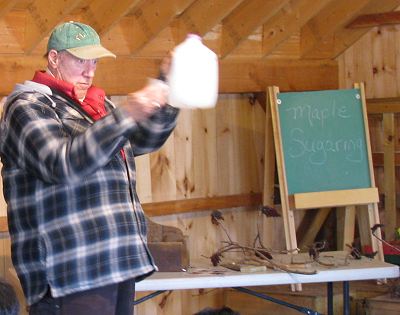
We also learned that more surface area speeds up the process, which is why this is a wide boiling pan.
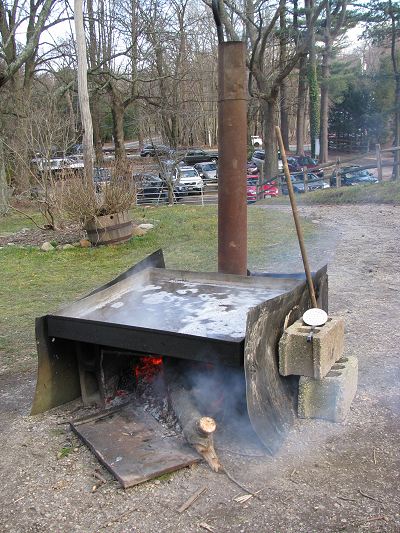
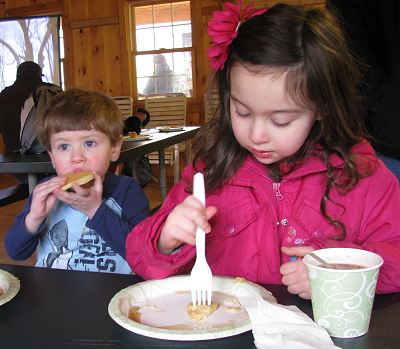
The kids had some pancakes with delicious, locally-made syrup. (All you Vermonters just hush…yes, I know it is your thing but we can make maple syrup in New York, too!)
And then, their favorite part of the experience: they watched how syrup can be further boiled to become a more concentrated maple sugar candy.
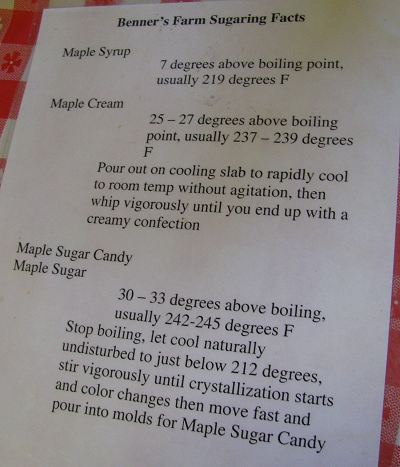
We learned that sugar solutions have a higher boiling point than water so the more concentrated the syrup, the higher the boiling point.
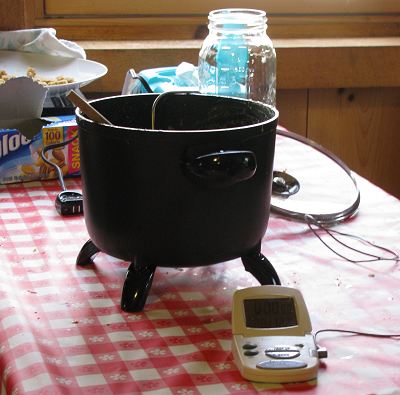
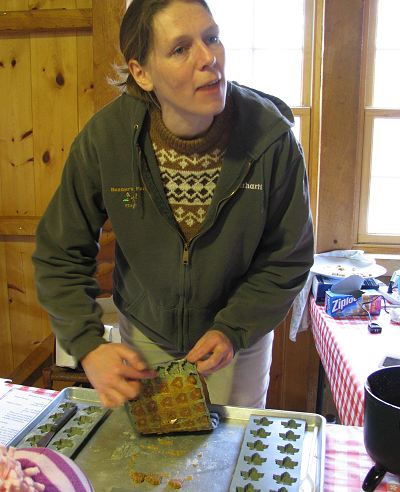
Educational Connections:
- Science and Culinary Arts:You can also make your own maple syrup if you have sugar maples. Even if you do not, you can easily use store-bought maple syrup to make maple sugar candy at home. Or, even more simple, make sugar on snow (or shaved ice if you are snow-less, like us)! With a candy thermometer, measure the temperature as you heat the syrup. Why is the boiling point higher for syrup than for water? How does boiling the syrup help turn it into taffy or candy?
- History and Culture: Read legends of the Native American discovery of maple syrup: The Iroquois Legend of Chief Woksis or The Anishinabe Legend.
- History and Culture: Learn about maple sugar parties and the importance of maple sugaring in the Northeast. Why was the maple sugar moon a highlight for people in times past?
- History (middle grades and high school): Maple sugar was once proposed as an alternative to cane sugar and the slave trade that supported cane sugar production. Would this have been a viable alternative? How might this have influenced history?
- Science and Botany: Learn how to identify maples in late winter and learn about the life cycle of the maple (make a “four seasons” painting), the parts of the leaf (press a leaf of make a leaf rubbing and label each part), and the process of photosynthesis.
- Ecology: How do recent innovations in sugaring help both the farmers and the environment?
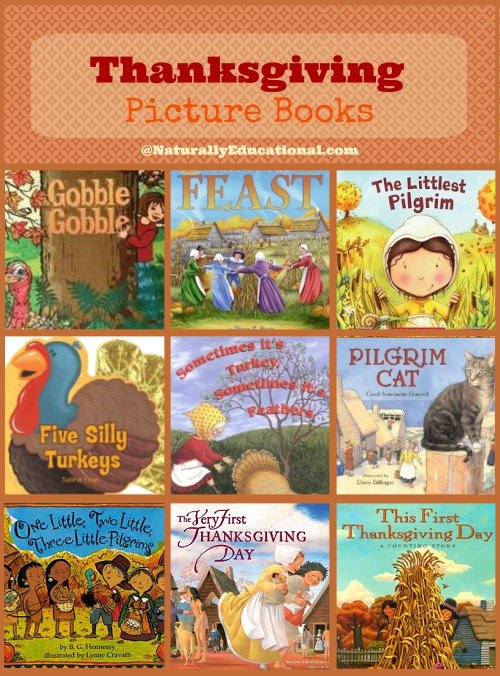

What a fun day! I’m definitely going to stock up after reading this…good info to know.
Интересный способ сбора сока с деревьев. Опробуем весной.